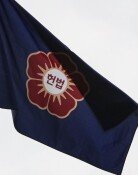In 35 Counties Across Korea, One Out of Five Is a Senior Citizen
In 35 Counties Across Korea, One Out of Five Is a Senior Citizen
Posted October. 07, 2005 07:35,
The senior population proportion aged over 64 years old in 35 Korean counties has exceeded 20 percent.
Now, one out of every 10 Koreans is over 64 years old. And there are expected to be more senior citizens than children under 14 years of age by 2017.
According to this years statistics on senior citizens released by the National Statistical Office (NSO) on Thursday, the ratio of the elderly population aged over 64 years old surpassed 20 percent of the total population in 35 out of 234 cities and counties nationwide, five more compared to the previous year, as of the end of last year.
A closer look at the listed counties reveals that Namhae County of Gyeongnam came in on top with a senior population ratio of 25.8 percent, followed by Uiryeong County (25.7 percent), Uiseong County of Gyeongbuk (25.2 percent), Gunwi County (25.0 percent), Goheung of Jeonnam (24.9 percent), and Gokseong County (24.6 percent).
Jeonnam was classified as the only aging region among cities and provinces nationwide, with a 14.9 percent senior population ratio. An aging region represents a region which has an elderly population ratio of more than 14 percent and less than 20 percent.
The national proportion of senior citizens is 9.1 percent, up 0.4 percent from 2004.
The number of senior citizens aged over 64 years old for each 100 young population members aged under 15 years old was 47.4 as of July 1 this year. The number has nearly doubled in 10 years. It was 25.2 in 1995.
There is estimated to be more aged population than young population by 2017 when the number of elderly citizens per 100 children is expected to rise to 104.7.
Choi Yeon-ok, the manager of the employment and welfare statistics department of the NSO, explained The number of senior population will exceed that of young population two years earlier than had been expected in last year as the birth rates declines and life expectancy prolongs.
Joong-Hyun Park sanjuck@donga.com
Headline News
- Med professors announce intention to leave hospitals starting Thursday
- Bridge honoring Sgt. Moon Jae-sik unveiled in Pennsylvania
- Chief of Staff Chung tells presidential secretaries to stay away from politics
- US FTC bans noncompete agreements
- N. Korea launches cyberattacks on S. Korea's defense companies







